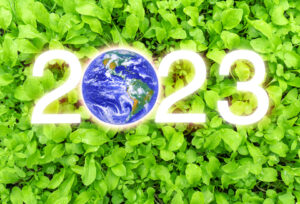Earth Day 2023
April 20, 2023
April 22, is the 52nd annual Earth Day. The first Earth Day was in 1970 (which was connected to the passage of the Clean Air Act that year).
You know the message. Many of us grew up hearing it over and over: Reduce, Reuse, and Recycle. So we may regularly clean and dispose of all our recyclable items in the recycle bins and feel like we are doing our part. I know I did. A KING 5 News survey suggests most Washingtonians try to be good recyclers. About 83% of adults polled say they recycle most or almost all items they are required to recycle. Just 4% say they recycle almost none of those items. However, I was disheartened to hear in the news that as of 2019 China would no longer be accepting recyclables from the US and that much of what they had received in 2018 was reported to have been dumped into the oceans. Talk about stinky news!
US and that much of what they had received in 2018 was reported to have been dumped into the oceans. Talk about stinky news!
This made me wonder what is happening to all the plastic we use and try to recycle. Reports vary on how much plastics are actually being recycled. The Smithsonian reported that 85 percent of US plastics ended up op in landfills in 2021. Other reports indicate only 20% of the world’s plastics actually end up being recycled. Worse other reports say in reality it’s only 9%.
New markets for handling our recyclable materials have developed, said King County Director of Solid Waste Pat McLaughlin, but a huge amount of recyclable material still makes its way to the dump.
Some industry studies estimate one in four items going into recycling bins are not recyclable. http://mediaroom.wm.com/the-battle-against-recycling-contamination-is-everyones-battle/.
The second issue comes from unwashed items. If it still has detergent in it or is speckled with food it will be rejected for recycling. A good rinse might help it be recyclable in the end. He also stressed that residents need to empty, clean and dry recyclables to prevent contamination that could send them to the dump.
You might think the problem is so big there’s nothing you can do about it or anything that will make much of a difference—but there are many ways you can help to do your part to help.
Here are two ways that I have decided to use less plastic this year.
- Switching to Laundry Strips. I am done buying plastic tubs of laundry detergent. I found Tru Earth Laundry Strips at my local QFC.
- It is affordable.
- It is easy. There is no measuring and no Mess. 1 strip = 1 load. The compostable package contains pre-measured strips of detergent that you simply toss in the wash. Each laundry strip packs ultra-concentrated, hypoallergenic, cleaning power into a tiny, pre-measured strip of liquidless laundry detergent that you just toss in the wash. Its low-sudsing formula works in all types of washing machines, including high-efficiency (HE).
- It is convenient. There is no heavy tub of laundry detergent to carry into the house or have to rinse out to make it recycle-ready. I also love that it is super convenient to pack a few flat strips for travel. They take up much less room than packing Tide pods in my suitcase, and other is no chance of accidentally popping the pod. It is also important to me that the detergent is hypoallergenic and hasn’t irritated our skin.
- It works. Worked on our clothes. The manufacturer boasts “The smart hypoallergenic laundry detergent formulation effectively seeks out and dislodges dirt molecules and stains, keeping them in suspension until they are rinsed away. It makes your laundry washing chore easier and kinder to our planet by reducing single-use plastics. Uncompromising cleaning power in an ultra-concentrated eco-strip”
- It reduces the amount of plastic I use. I love the fact there is nothing that needs to be recycled
- Tru Earth is not the only brand out there it is just the one I have tried and am using. Earth Breeze is another one I saw online that I have not tried yet. The least expensive appears to be Grove Co. laundry detergent sheets.
2. Switching to Shampoos & Conditioner Bars. I will be honest this one had me really worried. I have always been a firm believer in buying high-quality salon shampoo and conditioners. So I was pretty certain I would hate the bars. I bought a starter kit from The Earthling Co. that included 1 shampoo bar, 1 conditioner bar, 1 body wash bar, 1 wooden soap dish (8” version), and 1 Sisal Soap Saver Bag.
The first couple of times I used I wasn’t sure if the conditioner bar would be moisturizing enough for my hair. However, I have been pleasantly surprised the more times I have used the silkier and softer my hair feels.
Earthling Co says the bars are “made with gentle, nourishing ingredients, these cleansing bars leave your hair clean, shiny, and moisturized without any of the harsh ingredients you try to avoid (SLES/SLS, parabens, phthalates, artificial fragrances). Our bars are safe for all hair types (wavy, curly, and coily included!) and they last 50-75 washes or 2-6 months, saving both money and plastic! the Body Wash Bars contain nutrient-rich natural ingredients and were formulated to be gentle, moisturizing, and cleansing. No harsh, stripping, or drying ingredients here, and no artificial fragrance”
Check out the 7 Best of Shampoo Bars of 2023.